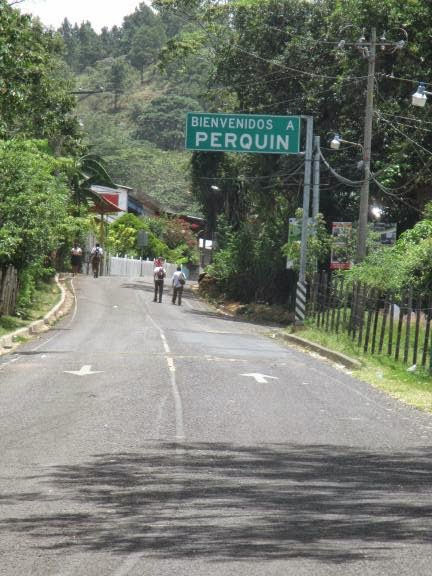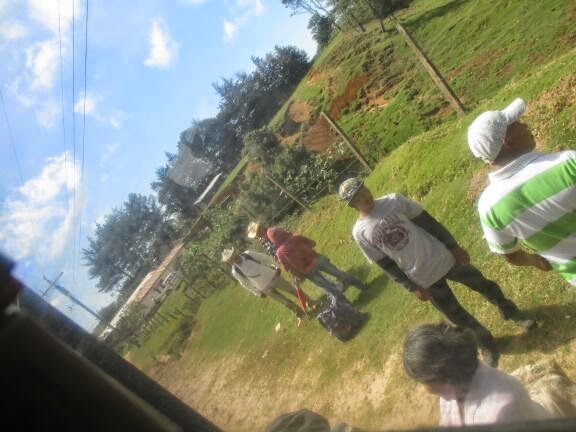This is the town you come to if you want to learn more about the civil war in El Salvador in the 80s.
I caught a taxi to the bus terminal and my driver had a huge smile the
whole time despite talking about the high costs of living and the poor
state of the economy. He gave me this keychain.
View from a chicken bus:
My arrival in mountain town, Perquín.
Not long after my arrival, I headed to the Museo de la Revolución Salvadoreña where former guerrilla fighters work as guides. My guide José walked with a limp and eagerly shared information and personal stories about life as a guerrilla fighter during the civil war. He pointed himself out in one of the photos at the museum.
Posters about the war, including some which protested the US government support for the the Salvadoran military which included death squads that targetted civilians.
strategizing
It was nice to see that many women were involved during the civil war, both in strategy and combat.
pupusas
This is a simulation camp of how life was lived by the guerillas during the civil war.
a hospital
a trench
It´s hard to see, but that`s a rope bridge, and the wooden panels where you step are not very encouraging as they are flimsy and widely spaced.
As I fell asleep in my rustic hostel, geckos climbed the walls and ceiling and squeaked away.
The next day I waited on the sidewalk in front of my hotel for my bus to come. I started to get worried since the bus was late and one of the locals told me ¨sometimes the bus doesn`t come.¨ Really? That`s great! Thankfully the bus did roll by and I flagged it down, then made my way back to Honduras.
I lost track of how many times our chicken bus broke down and each time the drivers stopped to pull out their toolbox to make repairs. The road was so dusty that, even with most windows closed, one of the guys working on the bus kept coming around with a towel to wipe down the seats. By the end of the trip I had a layer of dust on my bags, clothes, and in my hair.
Somehow this bus ride combined with the next bus to Tegu took significantly longer than the bus from Tegu to San Salvador.
When one woman got off the bus she asked me to hand her the bag at my feet. When I went to pick it up the bag started moving and squawking - pollitos.
When one woman got off the bus she asked me to hand her the bag at my feet. When I went to pick it up the bag started moving and squawking - pollitos.
The border post back into Honduras was in the middle of nowhere. Everyone piled off the bus to get their documentation done to leave El Salvador, but the bus didn`t stop at immigration to enter Honduras. Naturally, this was a big concern for me because you will be fined if you don´t get an entry and exit stamp in your passport.
When I asked the driver and another passenger about Honduran immigration, they didn´t say much. The only place we passed was a police station, but it had no signage about migration.
Just to complicate things, I`d read that this particular border post was a bit of an ambiguity since there is/was a territorial dispute. In turn, the formatlities at this crossing were a bit different. As well, I had bought a C-4 visa, and supposedly you don´t need to repeatedly get stamps in your passport each time you enter and exit any of the C-4 countries (Nicaragua, Honduras, El Salvador, and Guatemala). However, with the exception of El Salvador, each of the C-4 countries had put a stamp in my passport each time I crossed one of their borders.
If the border had been busier, I would have gotten off the bus to further look into matters, but if my bus had left without me, I could have been stranded there with little chance of transportation away from the border and 0 places to sleep.
I ended up being stampless in Honduras.


























No comments:
Post a Comment